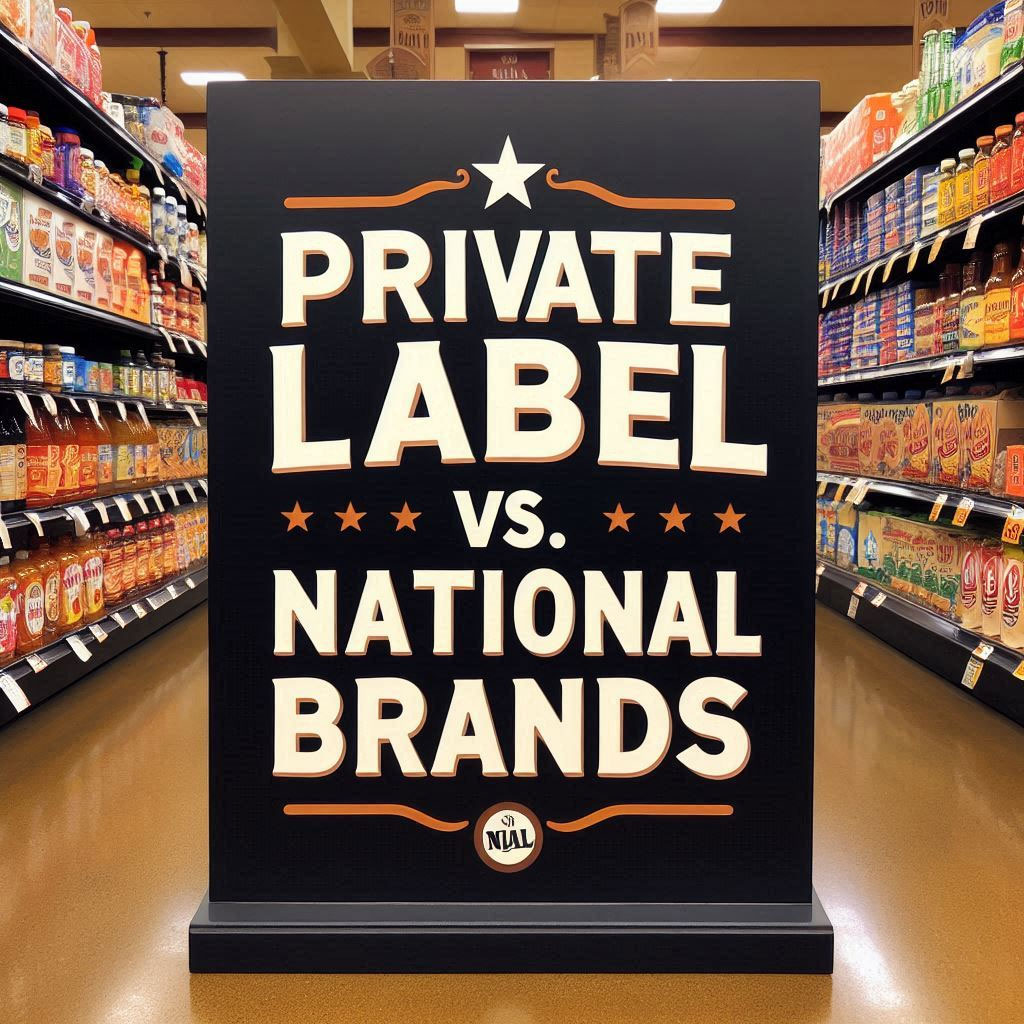
Private Label vs. National Brands: Navigating the Shifting Grocery Landscape
The ongoing battle between private label (PL) and national CPG brands is reshaping the grocery landscape. The growth of PL brands, driven by economic pressures and improved quality, poses a significant threat to national brands. However, this competition also presents opportunities for innovation and strategic marketing.
Growth of Private Label (PL) Sales:
Private label brands now account for 17-20% of total grocery food sales in Canada. Plus, 52.8% of shoppers having purchased more PL brands in the past three months versus one year ago.
Economic conditions and improved product quality are driving this growth. Rising consumer prices, caused by inflation, have made shoppers more budget-conscious, leading them to seek out more affordable options. As a result, PL products, which are typically cheaper than branded items, have become increasingly attractive. And this trend spans socio-economic boundaries, with many affluent grocery shoppers turning to PL products. Moreover, 53% of Canadian shoppers perceive PL quality as comparable to national brands, and 14% see it as better.
To combat private label, there are a number of strategies national brands can employ to compete with private level.
1. Increase Display Activity
Display activity, such as end-cap displays, increase the visibility of national brands. This can attract more attention from shoppers making it more likely to encourage impulse purchases.
2. Develop an Aggressive Pricing Strategy
With 85% of purchase decisions made in-store, price promotions are crucial. Tactics such as everyday low pricing (EDLP), coupons and multi-purchase savings offers are key methods to incentivize purchases and drive sales conversions.
3. Partner with Key Retailers on Account-Specific Marketing Programs.
Collaborating with key accounts allows brands to create promotions that are tailored to the retailer’s customer base. Brands can offer exclusive discounts that are only available at specific stores tailored to the shopping habits and preferences of the retailer’s customers. Brands can integrate their products into the retailer’s existing loyalty program or develop new, co-branded loyalty initiatives. This can include offering points for purchases, special rewards for frequent buyers, or exclusive access to products. Finally, brands can create exclusive contests in partnership with retailers which can drive engagement and excitement amongst shoppers.
What It All Means
The competition between private label and national CPG brands is a dynamic and evolving landscape. National brands can not only defend their market share but also thrive in this competitive environment by embracing innovation, leveraging data, fostering loyalty, collaborating with retailers, and adapting to economic conditions. This multifaceted approach will enable them to stay relevant and appealing to consumers, ensuring long-term success.
Sources: Statista, Caddle and Statistics Canada









